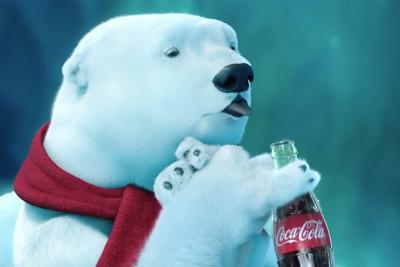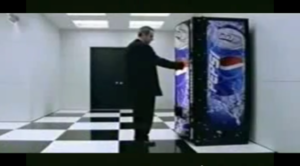Key Takeaways
- The 2012 Coca Cola Superstition campaign was a marketing initiative by Coca Cola that aimed to engage consumers during the buildup to the end of the Mayan calendar.
- The campaign centered around the idea that the world would end on December 21, 2012, according to the Mayan calendar, and Coca Cola wanted to create a sense of excitement and anticipation around this event.
- Coca Cola released a series of commercials and online content that played on various superstitions and beliefs surrounding the end of the world.
- The campaign encouraged consumers to embrace their own superstitions and share them with others, creating a sense of community and connection.
- One of the most memorable aspects of the campaign was the “Coca Cola Happiness Machine,” a vending machine that dispensed free Coca Cola to people who performed a superstitious act, such as knocking on wood or crossing their fingers.
- The 2012 Coca Cola Superstition campaign was successful in generating buzz and engagement among consumers, with many people sharing their own superstitions and participating in the campaign’s activities.
- Overall, the campaign was a creative and innovative way for Coca Cola to connect with consumers and create a memorable experience around the end of the Mayan calendar.
The Origin of the “2012 Coca Cola Superstition”
The Mayan Calendar and Its Prophecies
In 2012, a rumor began to circulate that Coca Cola had somehow predicted the end of the world through a hidden message in their advertising campaign. This so-called “2012 Coca Cola Superstition” quickly gained traction on the internet, leading many to wonder if there was any truth to the claims. In this article, we will delve into the origins of this superstition, examine the Mayan calendar and its prophecies, and ultimately separate fact from fiction.
The rumor of the “2012 Coca Cola Superstition” can be traced back to a series of advertisements released by Coca Cola in 2011. These ads featured a hidden message, supposedly predicting the end of the world on December 21, 2012. The message was said to be hidden within the labels of Coca Cola cans and bottles, as well as in various marketing materials.
The Mayan Long Count Calendar
To understand the basis of the “2012 Coca Cola Superstition,” we must first explore the Mayan Long Count calendar. The Mayans were an ancient civilization known for their advanced understanding of astronomy and mathematics. They developed a complex calendar system that included several cycles, the most notable being the Long Count.
The Mayan Long Count calendar is a system of tracking time that spans over 5,000 years. It is based on a series of cycles, with each cycle consisting of a specific number of days. The last cycle in the Long Count calendar is known as the 13th Baktun and was set to end on December 21, 2012.
The Misinterpretation of the Mayan Prophecies
While the end of the 13th Baktun in the Mayan Long Count calendar did hold significance for the Mayans, it was not seen as a prophecy of the end of the world. Instead, it marked the completion of a cycle and the beginning of a new one. The Mayans believed that this transition would bring about a time of renewal and rebirth.
However, as the year 2012 approached, many people misinterpreted the Mayan prophecies and began to associate the end of the 13th Baktun with doomsday scenarios. This misinterpretation was fueled by various theories and conspiracy claims, leading to widespread panic and fear.
The Coca Cola Ad Campaign
The Hidden Message
The “2012 Coca Cola Superstition” gained momentum when individuals claimed to have discovered a hidden message in the Coca Cola advertisements. According to these claims, the symbols and images used in the ads were said to align with the Mayan prophecies, suggesting that Coca Cola was somehow aware of the impending apocalypse.
However, upon closer examination, it became clear that these claims were unfounded. The symbols and images used in the Coca Cola ads were not specific to the Mayan culture or their prophecies. In fact, they were part of a broader marketing campaign aimed at promoting unity, happiness, and joy.
The Intention Behind the Campaign
The 2011 Coca Cola ad campaign, titled “Open Happiness,” was designed to inspire positivity and optimism among its viewers. The campaign featured a diverse cast of characters from different cultures and backgrounds, coming together to share moments of joy and happiness.
The hidden message in the Coca Cola ads was not a prediction of the end of the world but rather a call to embrace unity and celebrate diversity. It was a clever marketing tactic aimed at capturing the attention and curiosity of the audience.
The Truth Behind the “2012 Coca Cola Superstition”
Debunking the Myth
Despite the widespread belief in the “2012 Coca Cola Superstition,” there is no factual basis for the claims made about Coca Cola predicting the end of the world. The association between the Mayan prophecies and the Coca Cola ads was purely coincidental and fueled by a misinterpretation of both.
The Mayan Long Count calendar, as we discussed earlier, marked the end of a cycle and the beginning of a new one, rather than signifying an apocalypse. Coca Cola, on the other hand, used the Mayan imagery and symbolism in their ads to promote unity and happiness, not to make any prophetic statements.
The Power of Superstition
The allure of superstition is strong, and it is not uncommon for people to find meaning and significance in seemingly unrelated events or symbols. The “2012 Coca Cola Superstition” is a prime example of how rumors and misconceptions can spread rapidly in the age of the internet.
It is important to approach such superstitions with a critical mindset and seek out factual information before jumping to conclusions. In the case of the “2012 Coca Cola Superstition,” a closer examination reveals that it was nothing more than a misinterpretation of marketing tactics and ancient prophecies.
The Legacy of the “2012 Coca Cola Superstition”
Lessons Learned
The “2012 Coca Cola Superstition” serves as a reminder of the power of viral rumors and the importance of critical thinking. It highlights the need to question and verify information before accepting it as fact.
Furthermore, this superstition also demonstrates the influence of marketing campaigns and the impact they can have on public perception. The use of symbolism and hidden messages in advertising can captivate audiences and generate buzz, but it is crucial to separate marketing tactics from genuine prophecies or predictions.
In conclusion, the “2012 Coca Cola Superstition” was a product of misinterpretation and viral rumors. The association between Coca Cola’s ad campaign and the Mayan prophecies was purely coincidental, and there is no factual basis for the claims made about Coca Cola predicting the end of the world. It serves as a cautionary tale about the power of superstition and the need for critical thinking in the digital age.
Frequently Asked Questions
What is the 2012 Coca Cola Superstition?
The 2012 Coca Cola Superstition refers to a belief that drinking a can of Coca Cola on December 31, 2012, at exactly 11:59 PM, would bring good luck and prosperity for the upcoming year.
Where did the 2012 Coca Cola Superstition originate?
The 2012 Coca Cola Superstition originated in various online communities and social media platforms. It gained popularity as a fun and quirky belief among people who were looking for ways to bring positivity into their lives.
Is there any scientific basis for the 2012 Coca Cola Superstition?
No, the 2012 Coca Cola Superstition is purely based on folklore and has no scientific evidence to support its claims. It is considered a superstition and should be taken with a grain of salt.
Did Coca Cola promote the 2012 Coca Cola Superstition?
No, Coca Cola did not officially promote the 2012 Coca Cola Superstition. It was a belief that emerged organically among individuals and was not endorsed or encouraged by the company.
Did people actually believe in the 2012 Coca Cola Superstition?
Yes, many people embraced the 2012 Coca Cola Superstition as a fun and lighthearted way to welcome the new year. It became a popular topic of discussion and participation among friends and online communities.
Did the 2012 Coca Cola Superstition come true for anyone?
The 2012 Coca Cola Superstition is subjective, and its outcome depends on individual beliefs and experiences. While some people may claim that it brought them good luck, others may dismiss it as mere coincidence.
Is the 2012 Coca Cola Superstition still practiced today?
The 2012 Coca Cola Superstition was specific to the year 2012 and is not actively practiced today. However, it serves as a reminder of the various superstitions and beliefs that people create to bring positivity into their lives.
Are there any other Coca Cola superstitions?
While the 2012 Coca Cola Superstition gained popularity, there are no other widely known superstitions specifically related to Coca Cola. However, Coca Cola has been associated with various cultural and holiday traditions around the world.


